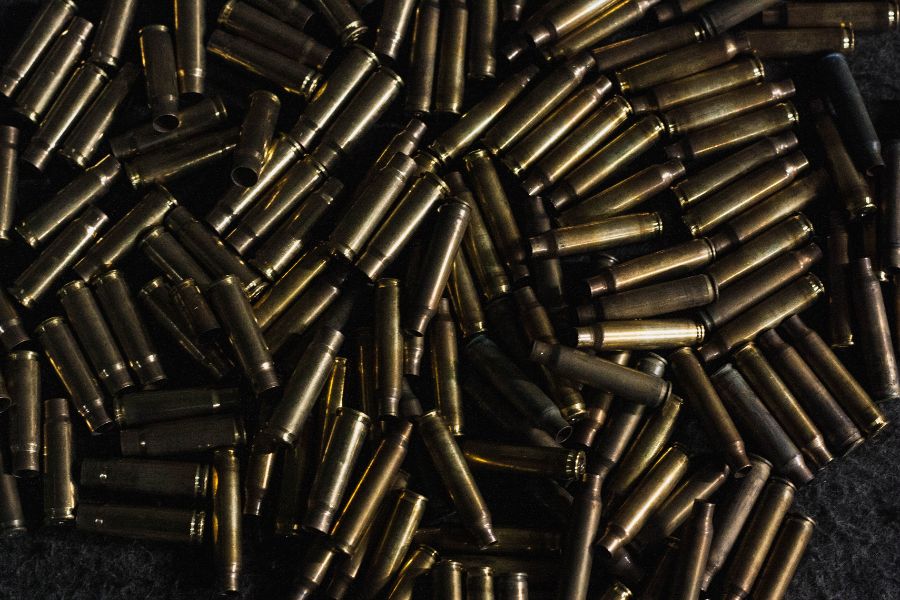By far, the most common bullet weights in the 30-06 are 150 and 180-grain bullets. These bullets can be found for a 30-06 in almost any store that carries 30-06. But what is the biggest difference between these two cartridges, which bullet weight is better, and why is one bullet weight better? This article will uncover all the murkiness around these two bullet weights.
Here is the short answer:
A 180-grain bullet will have more energy and less wind drift than a 150-grain bullet. However, a 180-grain bullet will also drop more than a 150-grain bullet. If you are hunting big game animals or are shooting long-range, you will want to go with the 180-grain bullets. If you are hunting animals like deer or are target shooting, you will want a 150-grain bullet.
With the short answer out of the way, we can look more in-depth at each bullet weight, the ballistics of each bullet weight, and an in-depth comparison of the two bullet weights.
180-grain bullets
180-grain bullets are very versatile and pack a punch 30-06 bullets. 180-grain bullets are most commonly used for hunting and long-range shooting. 180-grain bullets are the middle ground of all the 30-06 bullet weights so they can be used for most things.
This bullet weight is popular among long-range shooters because is its carrying energy and its low wind drift. With a high-quality scope, bullet drop isn’t a huge issue with long-range shooting but wind drift and moment are. At 500 yards 180-grain bullet has only 19 inches of wind drift which is less than the other bullet weights.
The reason this bullet weight is popular for hunting is because of its high energy. At the muzzle, this bullet weight has nearly 3000-foot pounds of energy and is moving at 2700 feet per second. Because of the high energy, this cartridge bullet weight combo is very popular for big game hunting.
The only downside to this bullet weight is that it is right in the middle of the range of 30-06 bullet weight meaning that it is not good for any extreme. A 180-grain bullet is too heavy for deer, but a little too light for hunting in heavy brush or moose hunting.
150-grain bullets
150-grain bullets are on the lighter side of the 30-06 bullet weight but still have plenty of versatility. Most commonly, a 150-grain bullet is utilized for hunting deer-sized game or plinking.
The reason that 150-grain bullets are good for plinking is that they are often cheaper than most other bullet weights. So if you need to get some less expensive rounds through your hunting rifle for practice then 150-grain bullets are best. They are also good for plinking because the lighter grain bullets have less recoil.
Hunting wise 150-grain bullets are unsuitable for much more than deer-sized animals. 150-grain bullets, while they can be used to hunt elk, are not the best option as they carry less energy than their heavy counterparts. However, if you are hunting deer, antelope, or hogs, a 150-grain bullet is best.
The biggest downside to 150-grain bullets out of a 30-06 is that they are too light for big game animals. While a 180-grain bullet could be used on deer, elk, and moose, a 150-grain bullet is not adequate for anything much bigger or smaller than a deer. So a 150-grain bullet lacks the versatility and stopping power of a 180-grain bullet.
Which bullet weight is best in different situations
Now that we have looked in-depth at each bullet weight, we can see when you would want one weight over the other and why.
When it comes to taking down large game animals, or shooting long-range, you will want a 180-grain bullet. A 180-grain bullet has a more predictable path of trajectory and more downrange and carrying energy lending it better to such tasks.
If you are just hunting deer or are target shooting for fun, you will want a 150-grain bullet. 150-grain bullets kick less, tend to be cheaper, and have less energy than 180-grain bullets. 150-grain bullets are better for deer because using a 180-grain bullet on a deer tends to result in a lot of wasted bloodshot meat.
Conclusion
Overall, both bullet weights are useful for separate tasks, and in order to achieve maximum performance out of your rifle, you will want to choose the correct bullet weight for the objective at hand.

